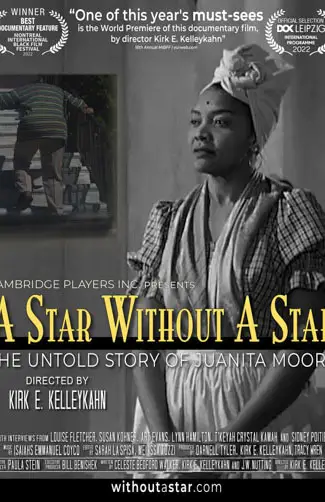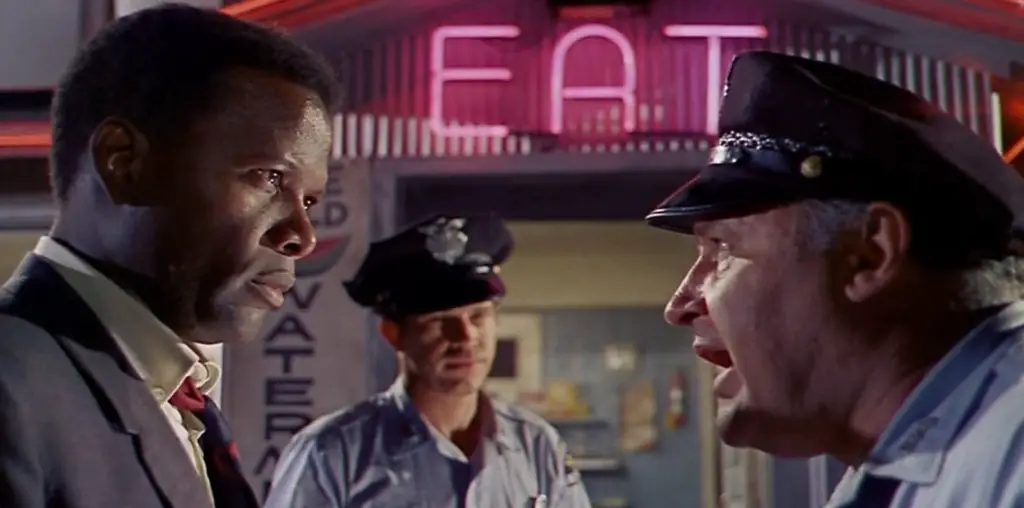
There are currently more than 3,000 stars on the Hollywood Walk of Fame, representing all aspects of the entertainment industry. There are even stars for fictional characters, such as Mickey Mouse, Tinkerbell, and Bugs Bunny. However, there is no star to represent Oscar-nominated actress Juanita Moore. Known best for her performance in Imitation of Life, Moore was a prominent African-American actress when there were very few in the film industry, let alone being nominated for Oscars. Director Kirk E. Kelleykahn’s Star Without a Star outlines Moore’s illustrious career and hopes to answer why someone with so much star power lacks the coveted star on the Walk of Fame.
Written by Kelleykahn, Celeste Bedford Walker, and J.W. Nutting, the documentary begins by discussing the process of getting a star before transitioning into Moore’s origins as a dancer. From dancing at the Cotton Club to living in Paris, the movie uses Moore’s early years as a foundation to elaborate on subjects such as McCarthyism, discrimination in Hollywood, and Jim Crow-era America. These ideas are conveyed through interviews with Moore’s contemporaries and archival footage. The picture progresses into a larger conversation of Civil Rights and representation when transitioning into Moore’s Oscar stardom and her time as a member of the Cambridge players. Kelleykahn uses each element of his subject’s career to further the thesis of a woman discriminated against in her life and posthumously discriminated against by her lack of recognition by Hollywood elites.

“…outlines Moore’s illustrious career…[she] lacks the coveted star on the Walk of Fame.”
Interviews with Sidney Poitier and Moore herself resonate the most. Poitier enhances the narrative, speaking directly to the stories of Old Hollywood glossed over when viewed through the rose-colored glasses of nostalgia. Star Without a Star juxtaposes Poitier’s talking heads by capturing Moore’s personality and kind spirit. The archival footage pairs well with each interview, constantly expanding on the actress’ extraordinary talent or showing genuine care for her craft and community. Though the talking heads throughout are strong and carry most of the emotional weight, the film does little to differentiate itself from other historical documentaries.
The overall pace and structure may not be the most innovative. Yet, how the filmmaker approaches McCarthyism in Hollywood elevates the story beyond a standard Hollywood fluff piece. Most documentaries discuss McCarthyism as a series of witch hunts and its place within the growing fears of Communism. Kelleykahn uses this initial foundation to open a conversation about McCarthyism as a means to censor socially conscious titles and uphold segregation in Hollywood. This makes for some of the most thought-provoking discussions in the movie.
Star Without a Star is an excellent examination of the oft-overlooked side of Hollywood’s Golden Age. The film pays homage to Moore’s legacy, showcasing her outstanding performance in Imitation of Life and her struggle to succeed in a business unwilling to accept her. But the documentary struggles to wrap up the narrative, suffering from too many good stopping points but never knowing when to do so. Nevertheless, the movie still opens many vital conversations about recognition on Hollywood’s most famous sidewalk. It’s an easy recommendation for fans of Juanita Moore and those wanting a less idyllic view of Old Hollywood.

"…an excellent examination of the oft-overlooked side of Hollywood's Golden Age."


